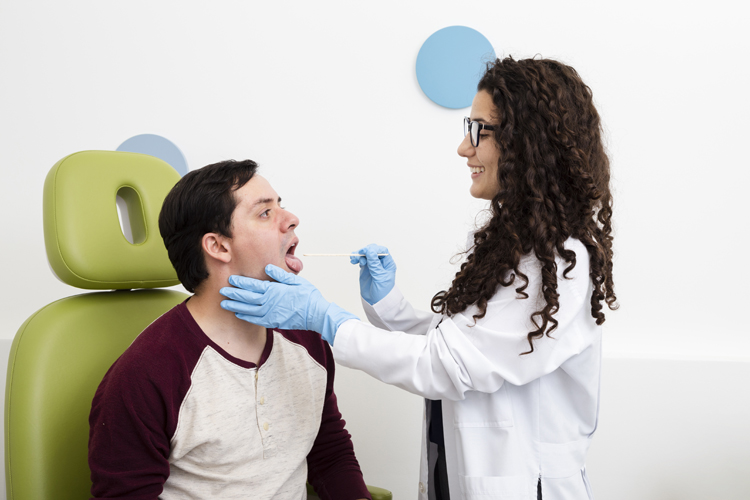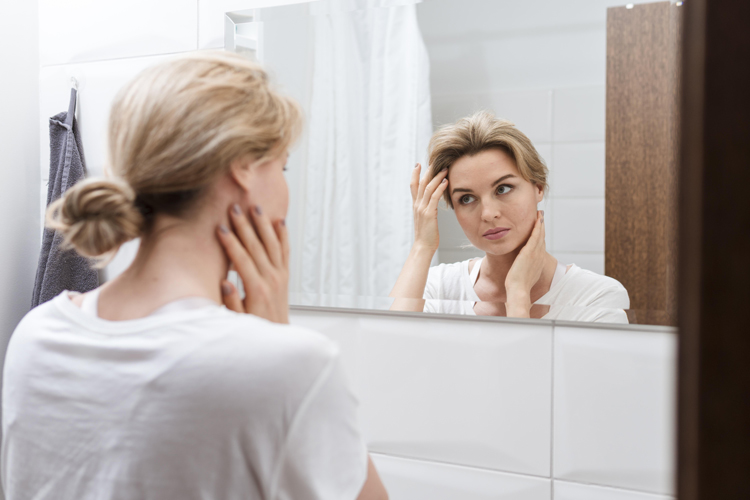Worldwide Fall Prevention Awareness Week is in September. We learn about falls with special consideration to the fall risk of people living with diabetes, and the inner ear in maintaining balance.
The stats of falls
Falls are one of the leading contributors to unintentional injuries, hospital admissions, and under severest circumstance, may result in death.
One in five of those who fall are injured. In the USA alone, an older adult falls every second; is admitted to hospital due to fall-related injury every 11 seconds; and every 19 minutes, an older person dies from these injuries.
Even if falls don’t cause a physical injury, fear of falling can reduce physical activity, and so can increase fall risk. Globally, at least one in three older adults (65 years and above) will fall every year.
No country is spared the problem of falls, with data from emerging regions suggesting falls are as much of a challenge as in developed countries.
Moreover, ageing is growing at a disproportionate rate in low-and-middle-income countries, who have had less time to prepare for the health needs of an older population.
Diabetes increases the odds for falls
While ageing is the biggest predictor for falls, chronic health conditions also increase the odds. One of these conditions is diabetes.
Diabetes is one of the most prevalent non-communicable diseases. In 2020, the International Diabetes Federations (IDF) reported that approximately 4 581 200 million adults in South Africa have diabetes. These numbers will increase considering the undiagnosed cases.
Recently, scientific evidence suggests that people living with diabetes are at increased risk of falls, including acquiring injuries resulting from falls.
The function of the ear
Our ears are not merely a structure that aid our physical appearance. The function goes beyond what we see externally. Medically, the ear is referred collectively as the auditory system and gives the sense of hearing and contributes to balance, the sixth vital sense.
Balance is controlled by the vestibular system. The vestibular organs are in the inner part of the ear, deep within the skull, next to the hearing portion of the inner ear, called the cochlea.
The vestibular system can’t be viewed by looking in to the ear canal, but the diagram below shows what it looks like. This figure illustrates its location relative to the external ear and the shape of the semi-circular canals bones.

The vestibular system uses intricate structures to sense movement of the head and body. It works in collaboration with our eyes, brain, muscles, and joints to keep our vision stable and our entire body balanced while in motion or performing daily activities.
Unlike our other senses (e.g. vision, hearing, smell, touch), we typically don’t notice our vestibular sense when it’s working normally. However, if the vestibular system is damaged, the effects can be devastating and include dizziness, imbalance, and falls.
A large population-based survey, in the USA, suggested that the vestibular sense starts to decline as early as the 40th year.
The question is, how is my diabetes putting me at risk from falling?
Link between diabetes and falls
Risk factors for falls are issues that increase your chance of falling. Generally, these can be divided into what are called intrinsic risks and extrinsic risks.
Intrinsic risks are individual risk factors like age, sex and health conditions. Extrinsic risks are related to the environment. For example, poor lighting, potholes in the road, and uneven pavements.
Challenges faced by people living with diabetes include the following:
- Use of multiple medications. These include medications prescribed by your doctor as well as anything over the counter. Use of four or more medications increases your fall risk. Do not stop your medications. Rather discuss with your doctor and see if any can be adjusted or stopped. Medications like sleeping pills, tranquilisers and anticonvulsants are particularly associated with fall risk.
- Possible loss of sensation due to vascular damage to the nervous system. For example, peripheral neuropathy.
- Dizziness and imbalance.
The sense of balance is the result of processing and responding to incoming signals from three senses. These are vision, vestibular and somatosensory (awareness of where the body is in space) inputs.
Diabetes can affect all these senses negatively. For example, peripheral neuropathy, or nerve problems can result in not being able to sense where the feet are.
Retinopathy, or vision problems, reduces important visual inputs necessary to identify slip and trip hazards and respond quickly*.
To be able to balance, visual input plays a crucial role.
Alongside the retinopathy that may be related to diabetes, older adults often have as issues with poor low-contrast visual acuity and impaired depth perception. Activities, such as climbing steps or stepping off pavements in bright sunlight or dappled shade, will be risky for adults with such visual changes.
Multifocal, bifocal and transitional lenses are particularly difficult and increase fall risk. The image below shows the distortion of the lower visual field when viewed with multifocal lenses.

Distortion of the lower visual field due to wearing multifocal lenses.
How diabetes affects the cochlea
As with other sensory systems, diabetes can also result in damage to the cochlea (the hearing organ) and its neighbouring vestibular system.
Within the inner ear, the balance organs are highly dependent on the tiny blood vessels for blood and nutrients. Studies report that diabetes is known to affect small blood vessels first before reaching the large ones. Therefore, compromising the ear’s ability to function properly.
When diabetes has been present for a long period, both inflammation and vascular damage are more likely*. Negative effects of diabetes on the vestibular system have been noted in both animal studies and clinical studies in humans*.
The vestibular system is a major contributor to our overall balance, and vestibular damage and its associated dizziness is an independent risk factor for falling*.
Large-scale epidemiological studies have shown that people with diabetes are associated with significantly higher odds of vestibular damage and, even after adjusting for nerve loss and vision loss, patients with diabetes and vestibular loss have a two-fold higher odds of falling*.
Fortunately, audiologists can assess vestibular function and fall risk. There are physical therapies that can help improve balance, which may be offered either by a suitably qualified audiologist or physiotherapist.
How to prevent falls
The National Institutes of Health, Department of Health and Human Services (newsinhealth.nih.gov) provides the following practical tips on how to prevent falls:
- Talk openly with your healthcare provider about falls.
- Find out about the side effects of any medicine you take and ask for a medication review.
- Have your blood pressure tested lying down and standing. Blood pressure that drops when moving from lying to standing is an easily reversible risk factor for falls and imbalance.
- Stay hydrated and ensure your iron levels are normal. Dehydration and anaemia are common in all older adults and can contribute to dizziness and falls.
- Stay physically active to improve your balance and strength. Guidelines for physical activity for older adults recommend 150 minutes of moderately intense physical activity per week; or 75 minutes of vigorous physical activity per week, as well as balance and strengthening exercises.
- Have your eyes and hearing checked regularly. Ensure your vision and hearing are both as good as they can possibly be. Don’t hesitate to try spectacles and hearing aids, if needed.
- See your healthcare provider about any foot problems. Make sure to discuss proper footwear.
- Make your home safer. Remove things you can trip over from stairs and walkways. Have grab bars and non-slip mats in bathrooms.
- Hold on to handrails when using stairs.
Which health professionals to consult when experiencing falls
Falls are predictable events and are therefore preventable. They are not ‘accidents’. Although prevention (through education and healthy lifestyle) is better than cure, in an event where prevention wasn’t possible, there are numerous health professionals involved in the identification and treating balance problems. Hence, it’s a team effort.
Within the context of diabetes, an audiologist may be able to assess your balance and risk for falls using a variety of testing modalities. Recommendations on how to perform your activities of daily living, considering the balance problem that you might be experiencing will be provided.
Also, audiologists will facilitate referrals to other professionals as illustrated in below, should the need arise.

Multi-disciplinary team approach in the management of people with balance and falls disorders.
To conclude, falls are common occurrences in all adults. The presence of factors, such as age, and chronic health conditions, such as diabetes, increase the risk of falls.
However, falls are predictable and thus preventable. Maintaining a healthy lifestyle, careful monitoring of health and medication, and management of environmental fall risk factors all contribute to reducing the risk of falls.

MEET THE EXPERT

MEET THE EXPERT

MEET THE EXPERT
References:
- Agrawal, Y., Carey, J.P., Santina, C. D., Schubert, M.C., & Minor, L. B. (2010). Diabetes, Vestibular Dysfunction, and Falls: Analyses From the National Health and Nutrition Examination Survey. Otology & Neurotology, 31(9), 1445-1450.
- Agrawal, Y., Carey, J. P., Santina, C. D., Schubert, M. C., & Minor, L. B. (2009). Disorders of Balance and Vestibular Function in US Adults: Data From the National Health and Nutrition Examination Survey, 2001-2004. Archives of Internal Medicine, 169(10), 938-944.
- D’Silva, L. J., Lin, J., Staecker, H., Whitney, S. L., & Kluding, P. M. (2016). Impact of Diabetic Complications on Balance and Falls: Contribution of the Vestibular System. Physical Therapy, 96(3), 400-409.
- Jacobson, G. P., McCaslin, D. L., Grantham, S. L., & Piker, E. G. (2008). Significant Vestibular System Impairment Is Common in a Cohort of Elderly Patients Referred for Assessment of Falls Risk. Journal of American Academy Audiology, 19, 799-807. doi:10.3766/jaaa.19.10.7
- National Institutes of Health Department of Health and Human Services. September 2019. newsinhealth.nih.gov/2019/09/preventing falls
- Rybak, L. P. (1995). Metabolic Disorders of the Vestibular System. Otolaryngology–Head and Neck Surgery, 112(1), 128-132. doi:https://doi.org/10.1016/S0194-59989570312-8
Header image by FreePik












